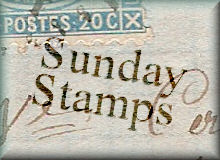Here are two maximum cards with the same Johnny Appleseed stamp. This 5¢ stamp was the first in the American Folklore Series. It was issued on September 24, 1966, at Leominster, Massachusetts, the birthplace of John Chapman (1774-1845), who was known as Johnny Appleseed. Johnny Appleseed was both a real person and an American folklore figure. He was a pioneer nurseryman who introduced apple trees to large parts of Pennsylvania, Ohio, Indiana, and Illinois.
The first maximum card (above) is a regular postcard. The second maximum card is by Colorano. It is the same size as a postcard but does not have a postcard back.






























